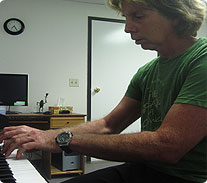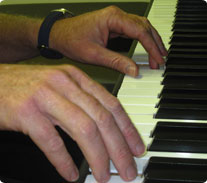Reach Peak Performance Levels with the Alexander Technique
Musicians must execute with speed and accuracy some of the most complex and demanding physical movements of any profession.
The Alexander Technique
- Improves the quality of physical movements involved in playing an instrument or singing, thereby enhancing the quality and range of the music itself
- Releases unnecessary tension in the body, resulting in more fluid and lively performances
- Eliminates unconscious habits that interfere with optimal music expression
- Is taught at the Juilliard School of Performing Arts in New York, The Royal College of Music in London, and at many other prestigious schools of music, universities, and colleges
Actors and Public Speakers must perform to their maximum potential to fully inhabit a character or to get their point across.
The Alexander Technique
- Enables actors and speakers to move, breathe, and speak powerfully and without strain or risk of injury
- Instills the confidence necessary to express oneself forcefully and to overcome stage fright
- Improves coordination so physical habits and tensions do not impede performances
- Was developed by an actor to conquer his poor vocal habits
Dancers must go beyond making it look easy to making it easy.
The Alexander Technique
- Facilitates ease of movement and correct postural alignment
- Enhances full body awareness to eliminate inhibiting muscle tensions.
- Improves strength and endurance
- Prevents injury and reduces pain from strenuous physical activity
- Integrates the dancer with any system he or she is practicing or learning
Notorious People who have studied the Alexander Technique
Over the past century, a number of noted performers have successfully used the Alexander Technique, including Yehudi Menuhin, Paul McCartney, Sting, Julian Bream, James Galway, Sir Colin Davis, Jeremy Irons, Paul Newman, Lyn Redgrave, Robin Williams, Joanne Woodward, and members of the New York Philharmonic Orchestra.



